Gerry O’Hara’s The Brute (1977)
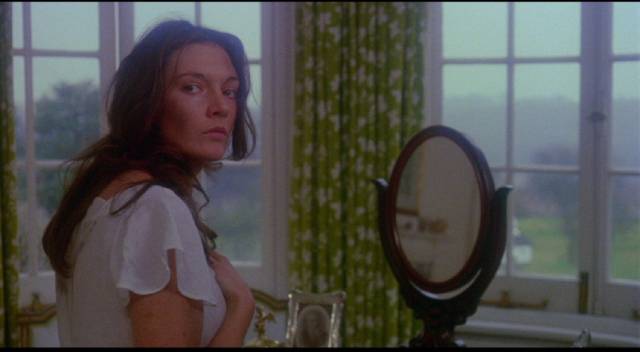
Exploitation movies, by definition, tend to appropriate subjects which more respectable filmmakers shy away from. In this, some of them, at least, break new ground – often in areas of sex and sexuality. Their commercial impetus derives from offering audiences something that good taste (and at times even law) has forbidden. Naturally these transgressions garner condemnation, if not outright attempts to impose bans. While movies like Kroger Babb’s Mom and Dad (1945) promised forbidden images in the guise of “education”, despite the sleazy hucksterism they had the power to shift over time what might be acceptable. Their tease had, by the 1960s, opened the way for nudity and depictions of sexual activity in mainstream movies.
Whatever the motives of exploitation filmmakers, their work has the power to pry open doors previously locked by bourgeois propriety, to address – sometimes obliquely, even inadvertently, sometimes intentionally – genuine social issues. The flipside of this is that the exploitational elements allow respectable people to continue suppressing knowledge of those forbidden issues. But as the movies never exist in isolation from the rest of society, the very fact that an issue is being addressed in a movie indicates that that issue is surfacing as a real concern, even if it has yet to be acknowledged by society as a whole.
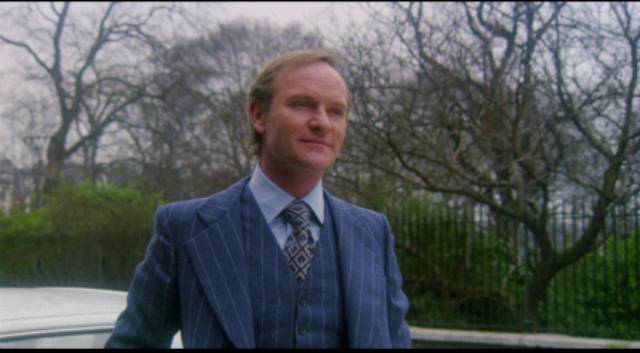
This tension – by no means universally present in exploitation cinema – is on display in Gerry O’Hara’s The Brute (aka The Brute Syndrome, 1977), newly restored and released on Blu-ray by Indicator. Contemporary reviewers seem to have dismissed the movie as a trivialization of a serious subject, although at the time that subject was often dismissed as a non-issue. The Brute was the first British movie to focus on spousal abuse, and it did so using melodramatic means and a fair amount of nudity to attract attention. Dismissed as trash at the time, it can be seen at this distance that O’Hara, who also wrote the script, approached the subject with a degree of intelligence. (O’Hara, who had a long career as an assistant director, including on some major features for people like Carol Reed, Tony Richardson and Otto Preminger among others, began directing and occasionally writing in the early 1960s, making a number of well-crafted exploitation movies, three of which were previously released on disk by the BFI: That Kind of Girl [1963], The Pleasure Girls [1965] and All the Right Noises [1970].)
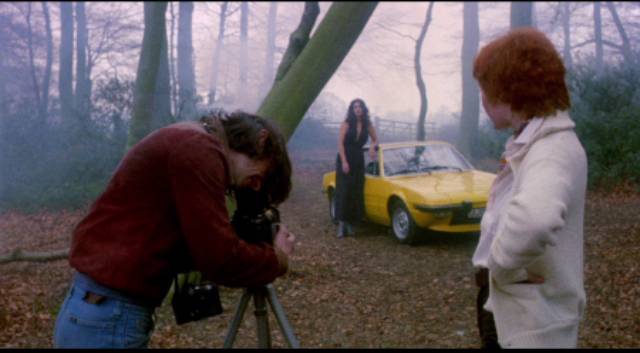
A big criticism of The Brute was his choice to centre the story on a glamorous middle-class woman with an independent career as a fashion model. Unrealistic, said reviewers who asserted that spousal abuse was largely a problem of the lower classes. While O’Hara’s choice definitely derived in part from the need for exploitational glamour, it actually served double duty by breaking down that classist attitude, pointing out that the problem spanned all layers of society. This is made clear by the introduction of a second abused woman who is working class, allowing O’Hara to illustrate that options available to victims were limited no matter what their economic status might be. Despite her social position, Diane (Sarah Douglas) remains bound to her abusive husband Teddy (Julian Glover) because, in the eyes of the law, her attempts to leave him will render her “unfit” to gain custody of their young son. After all, no one will believe that this respectable man could be doing the awful things she’s accusing him of.
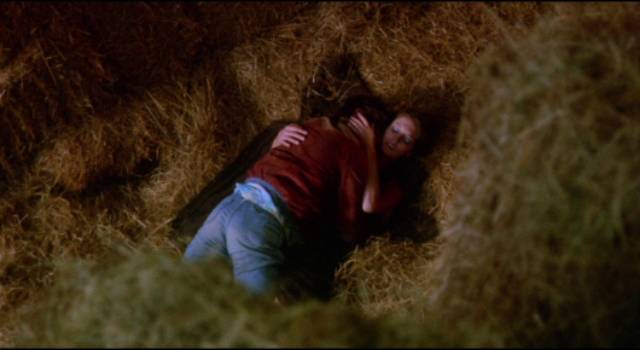
Under law, husbands “disciplining” their wives was quite acceptable until fairly recently (marital rape would not be outlawed in Britain until 1984) – there was a City of London by-law passed in 1895 prohibiting men from beating their wives between ten p.m. and seven a.m., not for the protection of women but rather to spare neighbours the disturbance of the noise the beatings produced. As the marital rape law indicates, the idea that women were their husbands’ property lingered until quite recently. O’Hara’s movie exposes and counters this attitude, arguing for women’s autonomy; it’s an uphill battle, with police returning wives to their abusers, seeing them as unreliable and hysterical, while taking the man’s word that he’s done nothing.
An interesting detail is the way O’Hara handles the character of Mark (future Withnail & I director Bruce Robinson), the photographer Diane frequently works with, to whose girlfriend Carrie (Suzanne Stone) Diane goes for help. Mark seems like a decent guy, and yet he has no hesitation in taking advantage of Diane’s vulnerability, forcing himself on her sexually. As the film progresses, it becomes clear that the only way women can find relief from male violence and exploitation is by joining together – Diane and Carrie do what they can to protect working-class Millie (Jenny Twigge) and her young son Charlie (James Farrar) from her brutal husband Alan (Sylvester Morand), while at one point Alan brings a friend home and the man makes only mild objections as Alan savagely beats Millie in front of him.
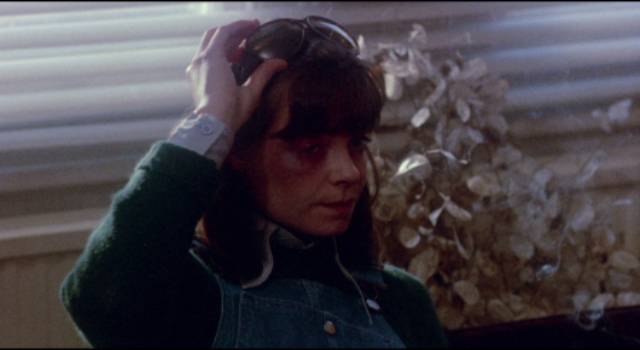
Some years before shelters for women and children began to open in Britain, O’Hara has one in the film – an underfunded, overcrowded community effort, again organized by women to help women. All of these elements – women’s solidarity, practical efforts to extricate abused women from toxic marriages, the class-spanning nature of the problem – indicate a progressive attitude which works perhaps uneasily with the more exploitative aspects. But even the latter undermine certain expectations. After the vicious beating which opens the film, the camera lingers on Diane as she showers the next morning; the nudity certainly fulfills exploitation’s most basic promise, and yet the body over which the water flows is marked by scars and bruises, disrupting the voyeuristic pleasure the audience expects. A similar discomfort accompanies the sex scenes between Diane and Mark; she acquiesces, but her submissivenesss is informed by the violence we have already witnessed. There’s a power imbalance, but we’re viewing it from Diane’s perspective, not from Mark’s, and he comes off as a creep as a result.
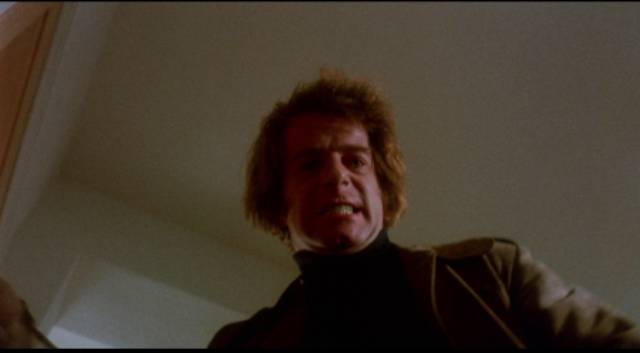
At only one point does O’Hara indulge in the fantasy of retributive violence an audience is likely to desire after watching so much abuse. When Alan breaks in, determined to reclaim his “property” Millie, we suddenly discover that Carrie is a fierce martial artist and she kicks the absolute shit out of him as if channelling Pam Grier or Tamara Dobson from the latest blaxploitation flick. It adds an implausible genre element to the serious social melodrama, but in the moment is undeniably satisfying.
While framing a serious social issue within exploitation parameters may not be the best way of stirring up discussion and change, the critical dismissal of The Brute when it was released somewhat missed the point – there was no better vehicle being released at the time to hold up as an alternative treatment. Spousal violence didn’t become relatively common as a movie and television subject until the ’80s, by which time social attitudes had already begun to shift. The Brute was ahead of its time and despite certain questionable decisions on O’Hara’s part, it now looks like a potent opening argument for a major shift in attitudes towards the social and legal power imbalance between the sexes. It also happens to be a well-crafted movie, with an excellent cast.
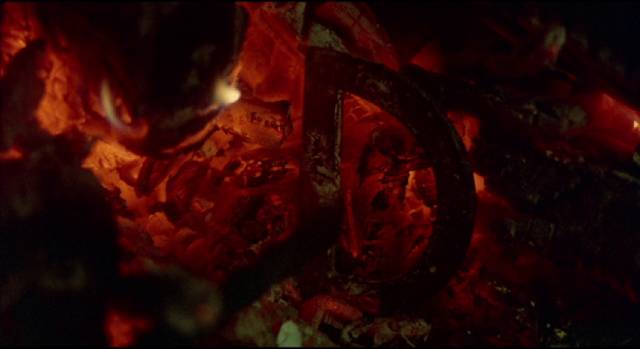
Indicator’s disk includes both the original uncensored British version and the slightly racier export cut, with a commentary by star Sarah Douglas and Kim Newman. Gerry O’Hara discusses his intentions and the film’s reception in a 14-minute interview, and a brief (40 second) introduction which was attached to the theatrical release has a psychiatrist explaining why men can be such primitive brutes. A brief (5 minutes) television report from 1978 covers the establishment of Britain’s first battered-woman shelter, established by activist Erin Pizzey. There’s also a short made by O’Hara to train sailors on survival techniques after a shipwreck (27 minutes).
Comments